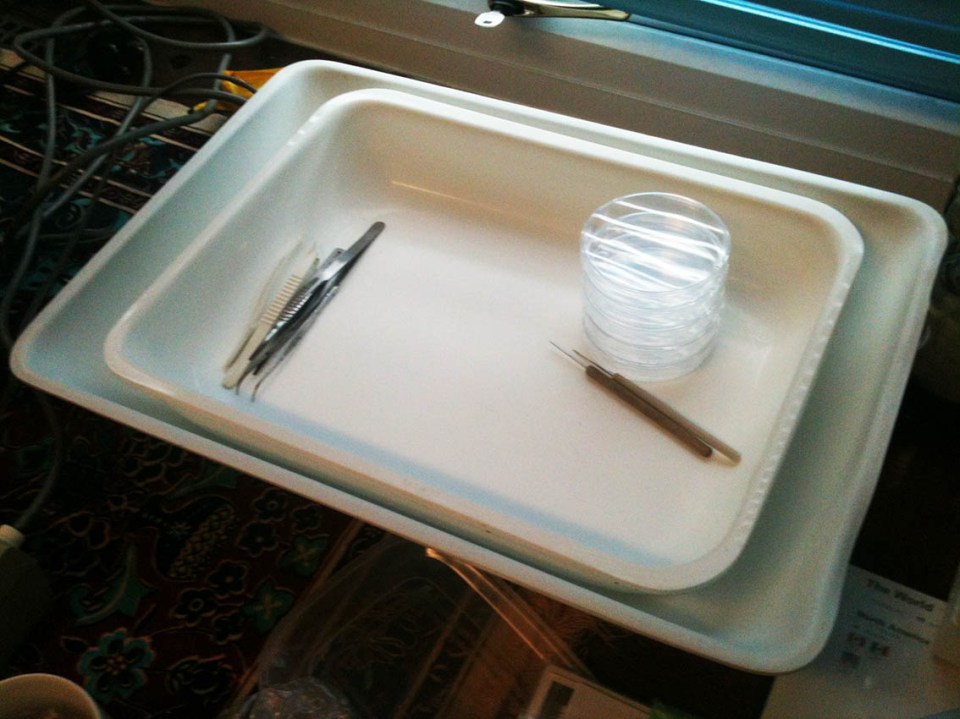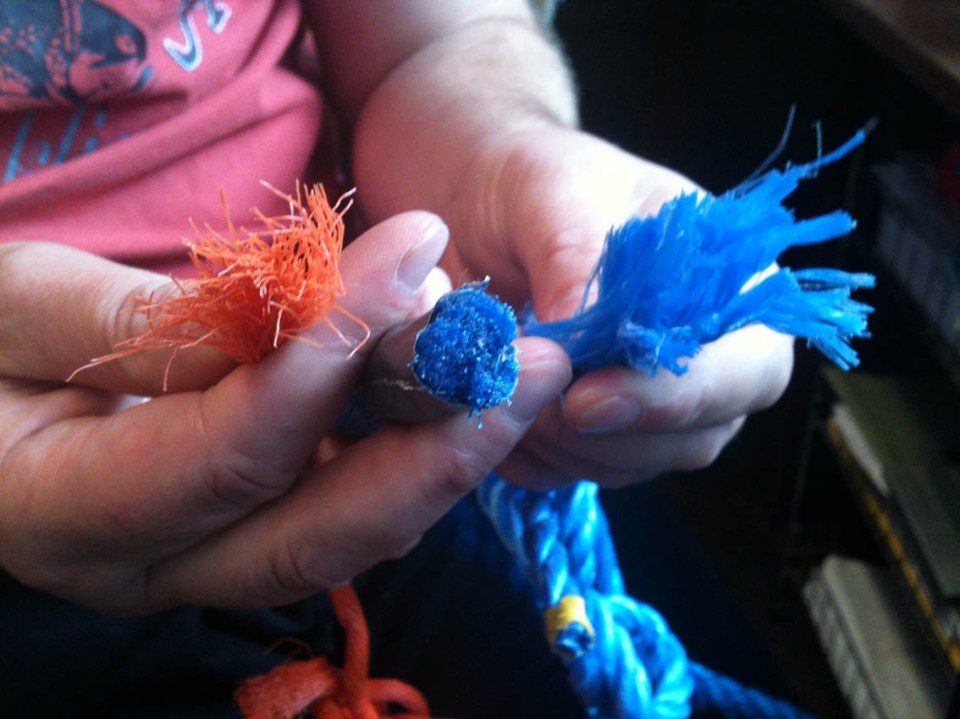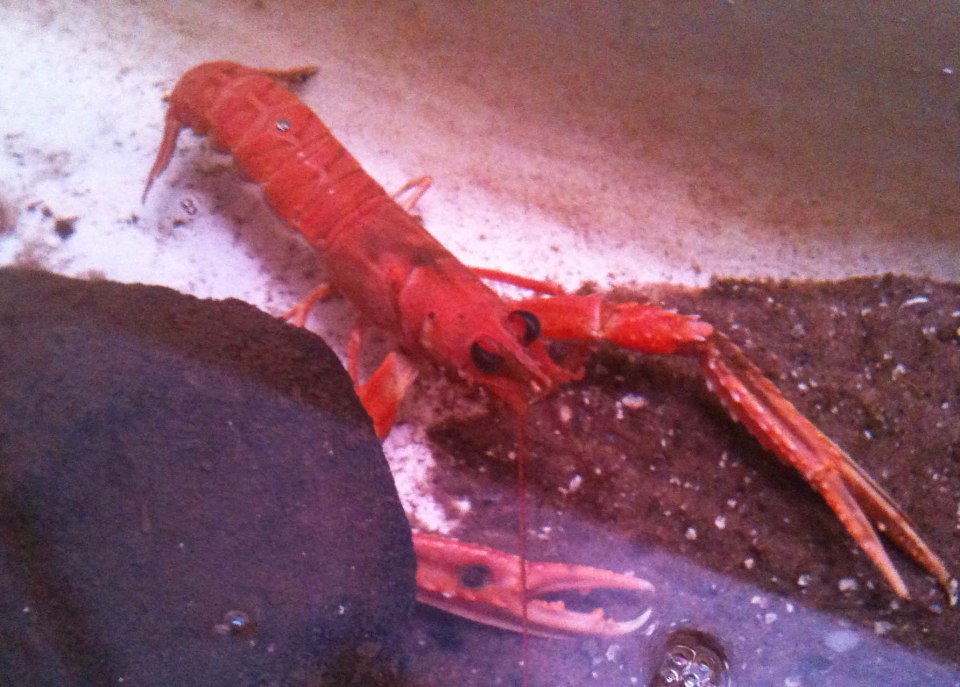Arriving on the Isle of Cumbrae early on Thursday morning at low tide I was able to watch the terns and oyster catchers rigorously working the tide lines for food. A perfect start to my day dedicated to focusing on techniques to help me get to know what’s happening in the littoral zone around our coast.
My eagerly awaited tutorial with marine Biologist Dr Phillip Cowie at UMBSM ( the University Marine Biology Station on the Isle of Cumbrae Millport) covered top tips on simple best practice microscopy, advantages of certain microscopes, effects of different light sources and ways of taking photographs through the microscope using a digital camera

Equipment and methods required for separating out different man-made particulates collected. As most low to medium density plastics float separation is easy and effective through immersing in trays of water and picking them out with tweezers to examine. Butchers dishes , tweezers……

The range of plastics in one small sample from the strand line near the station at the mouth of the Clyde is huge the cheaper end of the market using Polyethelene eg household string, plastic bags (right hand rope).

Stronger products such as load baring ropes and clothes are made from Polypropalene this form of plastic being manufactured from individual fibres (left hand rope), the strands of which are at the centre of the stations research, filaments are now being recorded in a host of marine organisms including fish, crustaceans such as the Nephrops (pictured here) and most disturbingly in organisms as small as sand-hoppers.

As sand-hoppers are food for so many birds feeding on our beaches I hope in someway to highlight this fact in my work . We then discussed the ways of capturing and keeping sand-hoppers alive in tanks for a display illuminating the issue of ingestion of fibres and the existence of plastic in the food chain. Dr Cowie pointed out that it’s difficult to be able to extrapolate and project the significance of their findings without continued and wider research into feeding habits of fish and other marine organisms.
Unfortunately this though will not now be continuing on at the station.
P.S By the end of the day I had been able to work on microscope techniques, build up my knowledge regards identification of different types of plastics and the possible sources/origins of them. I was able to discuss the implications of the different materials to marine organisms and broaden my understanding of the proposedresponses to managing beach litter.The Station was an appropriate place for me to build my marine education essential for my littoral project as it was founded in 1885 on the ‘Ark’ a boat fitted out as a laboratory and run by the islands naturalist Dr D Robertson and was visited by distinguished scientists and inspired hundreds of amateur naturalists like myself.
I would like to thank Dr Cowie for his enthusiastic support for my project, wish him and the research team luck and success in carrying their research on in the future and to encourage anyone who has the opportunity to visit the station.



































